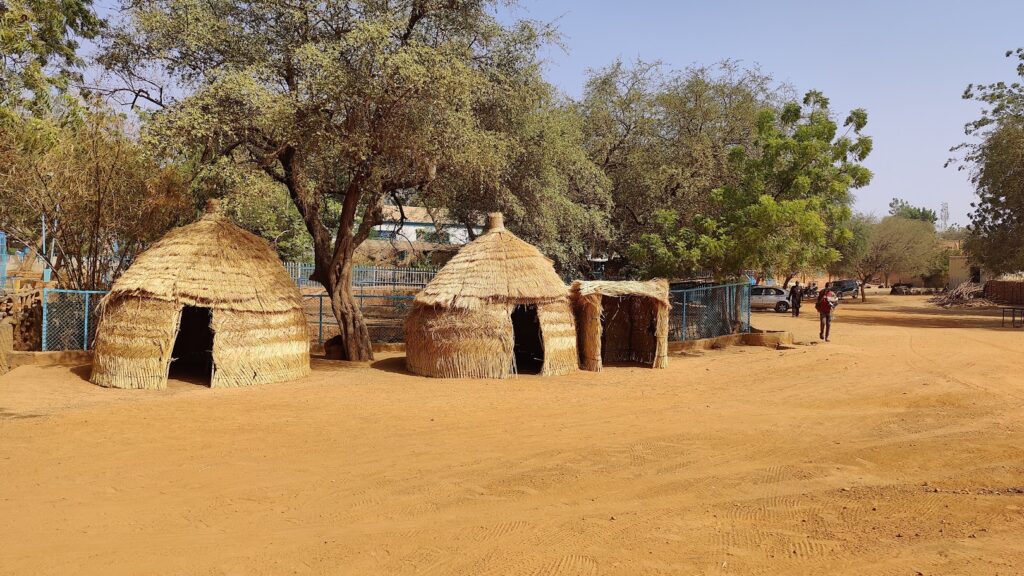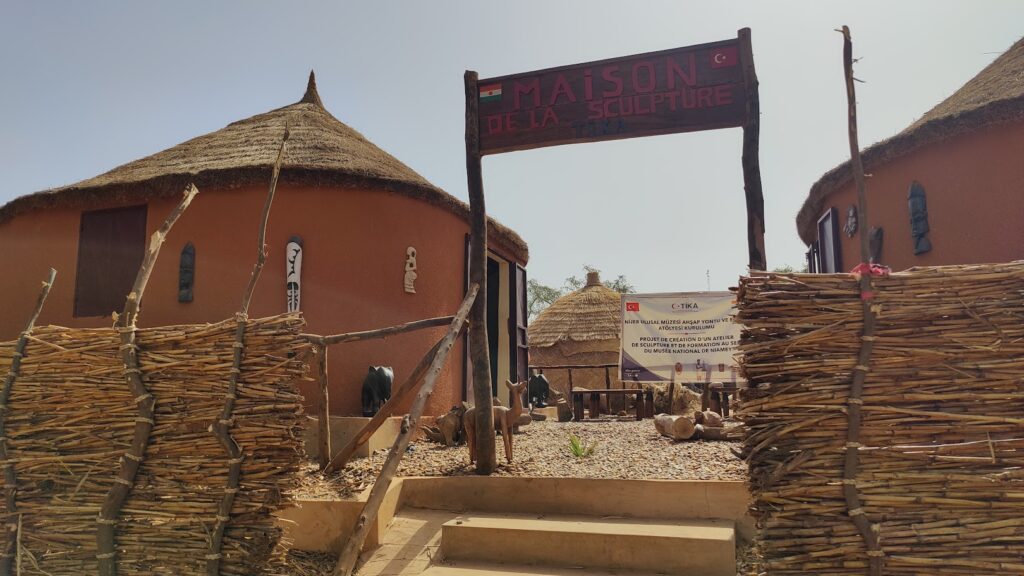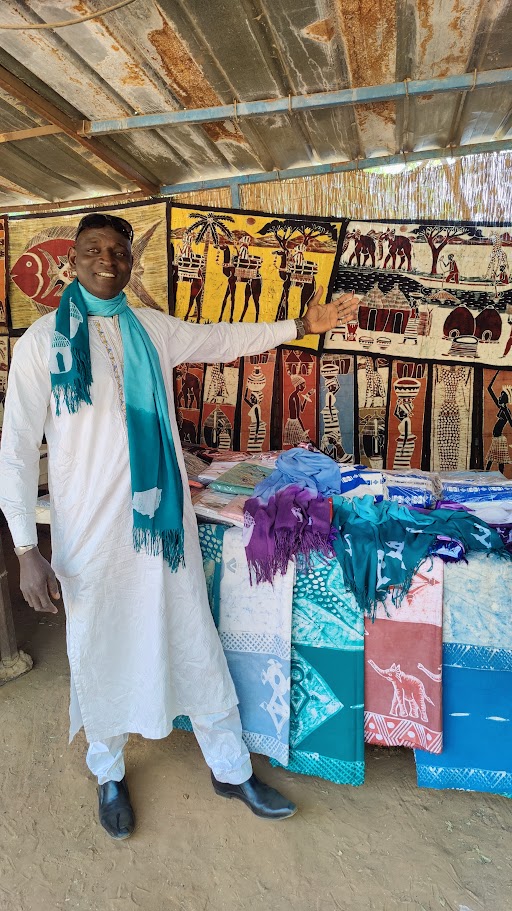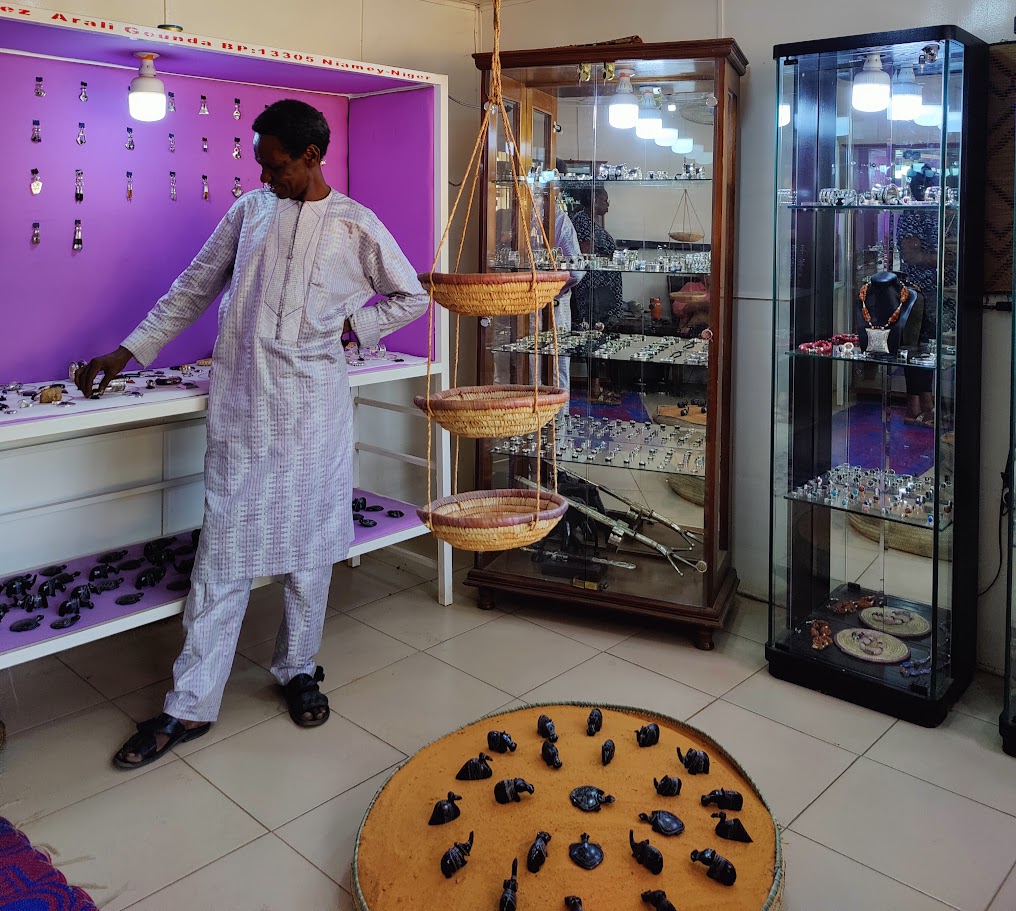One of my USAID colleagues took us out to the Musée National Boubou Hama where we saw some pretty cool stuff (and some not so cool stuff). The examples of local tribal building styles and handicrafts was one thing, the supremely depressed state of the animals in the zoo portion of the exhibit was another. Sometime, after I’ve had a few drinks, ask me about the resident giraffe… but I digress.
At any rate, there are seven tribal groups in Niger: the Zarma (part of the Songhay, whose ancestral land is where Niamey is located), the Hausa, the Tuareg (ostensibly the most famous), the Fulani (also referred to as the Fula, Peuhl and Wodaabe), the Kanuri, the Gurma, and the Tubu. Some of Ma’s work colleagues have said that it’s easy to tell which tribal group people come from, but her Zarma teacher says that’s baloney, because they’ve all intermarried so much that it’s only really possible in rare cases. That said, people identify with their parents cultures, so it’s not unusual for them to refer with pride to all of their ancestral groups.
At any rate, the museum has examples of Hausa and Zarma traditional dwellings:


There are also artisans showcasing their processes. In each of the above adobe buildings, there were wood carvers (if you squint, you can see a little camel hiding behind one of the fence posts). You’ll note the Turkish crescent opposite the Nigerien flag; Turkey is very supportive of both medical and cultural facilities here. In fact, the Niger-Turkey Friendship Hospital is the most modern medical facility in Niger and the mosque en plein air across the street from my house was built with Turkish aid money.
Textiles used to be a big industry here, but it’s hard work and the big commercial weavers produce better quality for less money. Today it’s hard to find young people willing to learn the handicrafts, so I imagine the traditional arts like this will disappear unless something is done.
That said, what they can create with what they have is incredible. Check out this guy’s loom:
We also met this nice gentleman, who sold batik prints. He certainly had a lot to say about how happy he was that Americans had stayed in Niamey after the French were thrown out following the coup in July of last year, and proudly allowed Ma to photograph him with his merchandise:

After the museum, we went to see our favorite Tuareg jeweler to stock up on gifts. Tuareg silver is gorgeous, and I’d happily blow paycheck after paycheck on Arali’s wares. There’s a piece that Ma has started saving up for. By the time we leave, she may have saved enough!

“Les touareg fabriquent la plus belle argent mais n’ont pas d’argent.” he said, in a play on words (“The Tuareg make the most beautiful silver, but have no money.”) while proudly showing me his shop.
At some point we’ll hopefully get some photos at the Village artisanal de Wadata, but not today – I’m exhausted!
